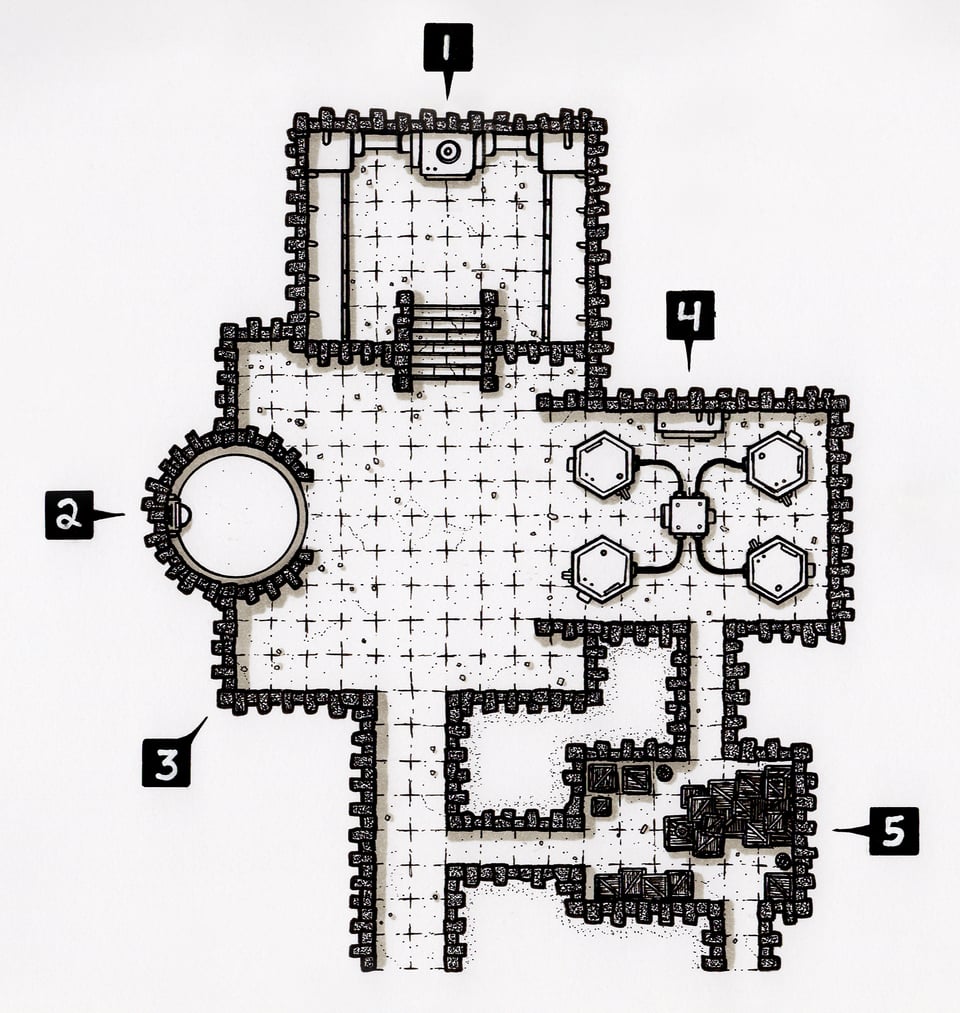Ludo-Labo
Running and playing pre-written adventures, I don’t think I always clue in to what makes an encounter effective, not “in the moment”, anyway. I’m too focused on the moment itself to parse why what’s on the page is translating into a good time. After reviewing the text, post-session, one key ingredient seems to be whether or not the text is providing enough information to telegraph danger to players. It’s not something I always do consistently well in my own writing, but it’s something I’m more mindful of lately.
For example, I’ve just completed edits on a hazards table, where players encounter a room full of crates filled with dangerous chemicals in a laboratory setting. Originally, I focused on the hazards themselves, describing the effects of the chemicals, and what happens when after players are already exposed to the danger.

On the second pass, I made sure to include simple details, to alert the players to potential danger, or a way for them to react, or avoid the danger, even if they were unsure of the specific outcome.
Let’s have a look at each.
Chemical Hazards (1D6):
Incendiary Tar: A dark sludge slowly expands, creeping into adjacent rooms. The slightest spark will set the mud ablaze.
This one is fairly visual, easy for players to spot. There’s nothing really to tell them that it is tar, or that it is flammable, perhaps an odor could be written into this, to make it clearer. But the fact that the tar expands slowly gives players time to react, even if they do throw a fireball at it.Explosive Reaction: Chemicals stored here are marked as highly volatile, the slightest impact will cause a violent explosion.
Here, the danger is much more sudden, explosions happen fast! Big warning signs filling the room are easy to notice and avoid. Perhaps the players could use this knowledge to their advantage, setting a trap.Noxious Gases: Spending any time in this room will cause one to become light headed, intense nausea is soon to follow.
While not immediately evident, the gradual sickness helps to alert players to a more severe outcome, allowing them the chance to escape the area.Acid Puddle: Recklessly treading through this room, the soles of one’s boots will be eaten away after a few minutes.
This one is probably the least telling, and speaks more to the GM than the players, leaving more work for the GM to make it fair. I’ve not explicitly written what the hazard is here, or how it might be noticed. But the stakes are not as high either. It takes some time for the acid to take effect, and, at worst, they are out of a pair of shoes. Still, I’ll admit, it’s the worst of the bunch.Oxidizing Vapor: A pungent, yellow cloud fills the air. All metal will rust after a few minutes of exposure.
A tell that’s a bit more overt, featuring sight and smell, to alert players in multiple ways. The stakes are higher here, strolling through this room is likely to damage a players armor and weapons, making them less effective overall.Liquid Nitrogen: A pale mist wisps across the floor. The air becomes colder upon approach. Exposed skin will become frostbitten within seconds of stepping into this room, joints will seize soon after.
Pale mist on its own might not be much of a warning, depending on where players encounter it, but given that this is an indoor area, that should put them on alert. If that’s not enough, the addition of increased cold as players approach should make it especially clear that this is not a normal room.
I could probably keep editing forever, but at the moment I’m feeling good with my progress on this kind of thing. Being able to identify that things could be better is a good place to be. I’m willing to bet that it means things will be even better on the next adventure.
I'd love to see some good examples of telegraphed danger in TTRPGs, hit me up with your favorites!